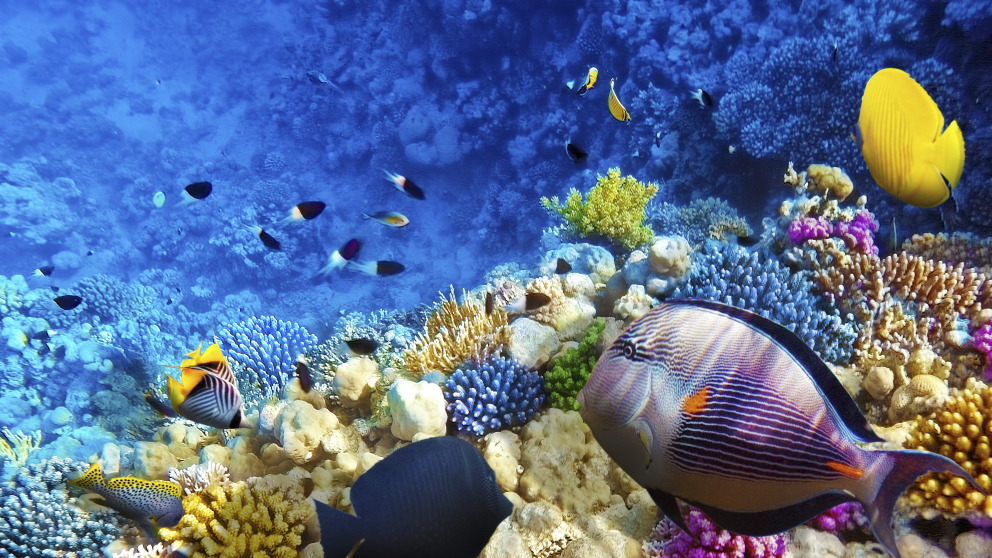We need a binding global agreement on plastics
02.07.2021
There are increasing signs that negotiations over a global agreement on plastic pollution will begin in February 2022. In an article co-authored by IASS researcher Sebastian Unger and his team published in the journal “Science”, a team of scientists present the three key objectives and a number of supporting actions for an intergovernmental agreement in order to effectively curb the increasing amount of plastic waste.

“A new plastic treaty must build on existing measures and regional agreements that relate to marine protection. The many activities in recent years were good and important, but they have not made enough progress. A global agreement that focuses on the entire life cycle of plastics can be a very effective tool to strengthen existing institutions or to compensate for their weaknesses,” says Sebastian Unger, Research Group Leader in the field of Ocean Governance at the Institute for Advanced Sustainability Studies (IASS).
Steps towards a global plastic treaty
The question is not whether there will be a global agreement on plastic pollution, but rather when it will happen and what form it will take. In the first half of the fifth session of the UN Environment Assembly (UNEA 5.1) in February, numerous states expressed their support for a new UN treaty. However, the UNEA only met virtually and could not make a decision on the matter. The governments that want such an environmental treaty are keeping up the pressure: in early June, 79 of those states presented on Oceans Day a Plastic Pollution Declaration, which calls for a legally binding agreement on plastic waste. Environmental protection organisations and numerous companies have been calling for such an agreement for years. On September 1-2, Germany, Ghana, Ecuador and Vietnam will hold a virtual ministerial conference to mark the final sprint to the decisive UN Environment Assembly next spring (UNEA 5.2). The conference is meant to establish a negotiation committee to work out the details.
A global plastic treaty must include these three core objectives
As of yet, it is unclear what exactly an agreement would look like. The authors of the article in Science argue that the plastics convention must set three key goals:
- First, the total amount of new plastic that can be produced must be capped and gradually reduced. This not only prevents new plastic waste, but also makes a major contribution to meeting the 1.5 degree climate protection target. By 2040, the production of new plastics should be reduced to a minimum.
- Second, the agreement must stipulate the conditions for a more circular plastic economy. To this end, plastic must be recyclable and recycling must be ensured. Shared technical standards are indispensable here, along with mandatory information transfer along the value chain. The measures must also help eliminate the nearly 2,500 toxic additives still in use today.
- Thirdly, plastic pollution in the environment must be cleaned up, both on land – where it is comparatively easy – and in the oceans, where clean-up is much more difficult and expensive.
“The time has come for a global agreement on plastic waste. All the previous measures and action plans have failed to get the flood of plastic under control. Now is not the time for more beating around the bush: we need an international treaty that goes far beyond existing agreements and includes comprehensive action. Above all, it should set a clear limit on the amount of plastic that can be produced annually. In addition, the international community must require by law that plastic be recyclable and ensure that most of it is recycled savely. Finally, precautions must be taken to remove the plastic pollution already present in the environment – and prevent new waste from ending up there. Such an agreement can only be effective if all the main polluters take part. The implementation of internationally agreed rules by the participating countries in their own regions requires a clear commitment on their part,” notes Dr Nils Simon, Senior Advisor at adelphi and lead author of the article “A binding global agreement to address the life cyle of plastics“ published in the journal “Science”.
The article also describes other supporting mechanisms and measures that states can use to achieve or help implement these three goals.
Further information and a direct link to the article available here: https://www.adelphi.de/en/publication/binding-global-agreement-address-life-cycle-plastics
Further authors of the article:
Karen Raubenheimer (University of Wollongong, Australia)
Niko Urho (University of Massachusetts Boston, USA)
David Azoulay (Center for International Environmental Law, Switzerland)
Trisia Farrelly (Massey University, New Zealand)
Joao Sousa (International Union for the Conservation of Nature, Switzerland)
Harro van Asselt (University of Eastern Finland, Finland)
Giulia Carlini (Center for International Environmental Law, Switzerland)
Christian Sekomo (National Industrial Research and Development Agency, Rwanda)
Maro Luisa Schulte (adelphi, Germany)
Per-Olof Busch (adelphi, Germany)
Nicole Wienrich (Institute for Advanced Sustainability Studies, Germany)
Laura Weiand (Institute for Advanced Sustainability Studies, Germany)
Publication:
Simon, Nils; Karen Raubenheimer, Niko Urho, Sebastian Unger, David Azoulay, Trisia Farrelly, Joao Sousa, Harro van Asselt, Giulia Carlini, Christian Sekomo, Maro Luisa Schulte, Per-Olof Busch, Nicole Wienrich and Laura Weiand 2021: A binding global agreement to address the life cycle of plastics. In: Science, 10.1126, science.abi9010.
